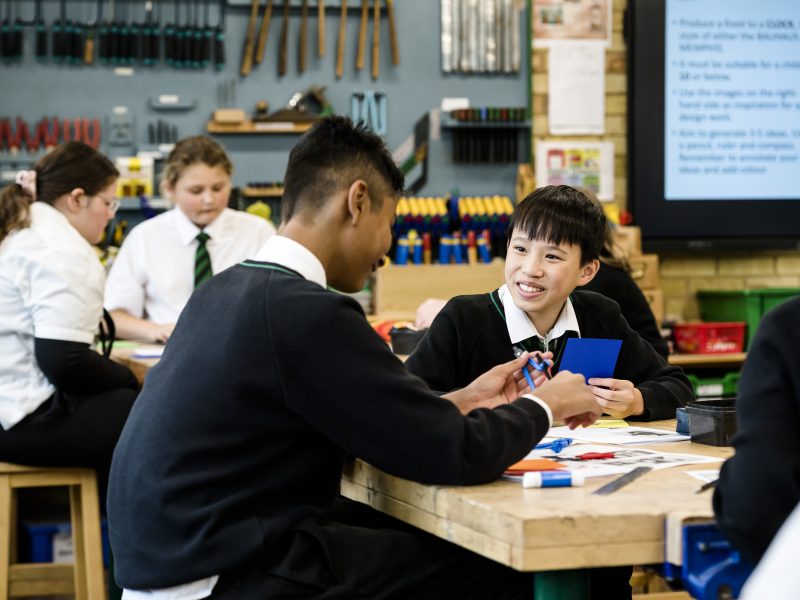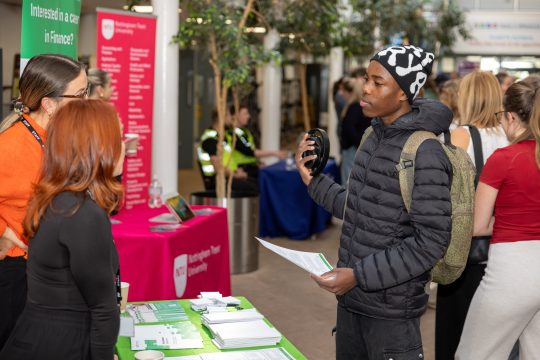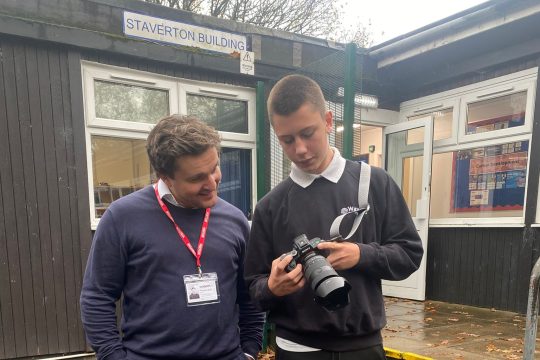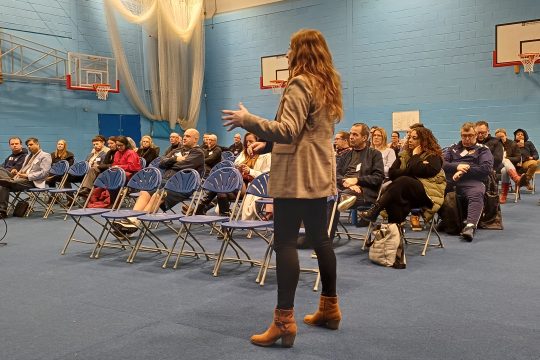Careers Education is about lighting fires in young people
Putting careers at the heart of education and leadership is one of five prominent themes that underpin the updates to the Gatsby Benchmarks. As head of modern foreign languages, these are my experiences of linking curriculum learning with careers as part of my school’s overall programme of careers education. Emma AldersonEmma AldersonHead of Modern Foreign Languages, St Leonard's Catholic School
I’m passionate about showing our pupils the career choices that are available from studying modern foreign languages. There is a stereotype associated with studying languages – you either become a translator or a teacher – and I’m keen to push their thinking way beyond this rather literal interpretation.

I see a key part of my role as challenging them to move beyond misconceptions and stereotypes and showcasing the real breadth of careers open to language students and the routes that will help get them into those careers. I often make reference to friends and former pupils who studied languages at university to show them what careers they are now enjoying – this could be in civil service, in technology roles, working for financial institutions – to be honest, most non-technical careers are open to language students.
Year 9 is a critical year in any secondary school. This year, we’ve taken a bold and pioneering step in Year 9 to explore careers advice in French by modelling a unit of work in which pupils explore key questions about careers but do so in French, acquiring the linguistic skills to talk about their interests. This is the first time we’ve done this at St Leonard’s and I’m pleased to report the success of combining careers education and language teaching together in this way. The pupils are responding well to it and it provides a platform for our references to careers and pathways as pupils move through the school.
We are very fortunate in our Year 13 this year to have two students who have decided to pursue languages at university – they have been the inspiration for our Year 7 and allowed us to talk about languages pathways. We hope that the fires we light, go on to grow and fuel passions for the future.
One challenge we get from teachers across all subjects, and I’m sure this isn’t unique to our school, is ‘How do we fit this into an already-packed curriculum?’. I fully empathise with teachers – it often feels like there simply aren’t enough hours. But what I would advise is this: make the time and the curriculum will cope. It will be worth it. Once you’ve done it, you can see that it is just about refocusing, re-tasking the time; the level of engagement that you get from the pupils as a result will be immeasurably beneficial.
The updates to the Gatsby Benchmarks include ensuringthat allsubjects link curriculum learning to careers, and this needs to be done in every year from Years 7 – 13. My Learning My Future has been a useful suite of resources, developed by The Careers & Enterprise Company (CEC), that supports embedding careers throughout subjects and covers over 20 subjects.
As head of department, I work with my peers – heads of departments in other subjects – and also the SLT, which includes our Careers Leader, to make sure that careers form part of the ongoing staff development programme. The free online training that the CEC offers for all teachers has been developed to help them understand how careers can be woven into their subjects and supports their knowledge around pathways. This ensures that all teachers and staff who support pupils are equipped with resources, ideas and support to teach careers and support delivery of the careers guidance programme.
At St Leonard’s, we can see the huge impact of linking the curriculum to careers across all subjects. Pupils have told us how much they love learning about careers; in classes we can see spirited discussions, lots of questions and huge enthusiasm for discussing careers. Subject teachers play such an important role in highlighting the relevance of the knowledge and skills their pupils are learning to future career paths – this really helps young people ‘get’ their subjects and why certain things are being taught. It’s hugely motivational.
In summary, we’ve seen the hugely positive impact of linking curriculum learning to careers at St Leonard’s. It’s improved outcomes for our young people, it’s upped pupil motivation and it’s led to school improvement – we recently achieved an Outstanding Ofsted report, with the inspectors praising how seamlessly careers information is integrated into the curriculum and how pupils learn about a range of careers related to every subject.
Here are my recommendations to anyone who is a curriculum teacher or head of department who might want some ideas about how to link curriculum learning to careers:
- If you’re worried about fitting careers into the curriculum, try and break it down into manageable sections and spread it throughout the year
- Take a cross-school approach to careers; move beyond your subject silo and allow the pupils to make connections between geography, English, languages – you will see productive and energetic conversations amongst the pupils, improved knowledge amongst pupils and it can lead to better motivation in classrooms
- Encourage staff to share their own personal careers journeys and those of their friends, peers and families – these personal journeys will resonate with pupils strongly
- For languages specifically, it’s important that pupils see the relevance of studying languages to day-to-day life
- Use the careers programme as a way of surprising the students, challenging their thinking, making connections, bringing in speakers from different walks of life to light those fires in them, to make them smile, make them think outside the box
More on linking curriculum learning to careers
Read about the updated Benchmark 4: Linking Curriculum Learning to Careers here and in section 4 of the Good Career Guidance: The Next Ten Years report.




